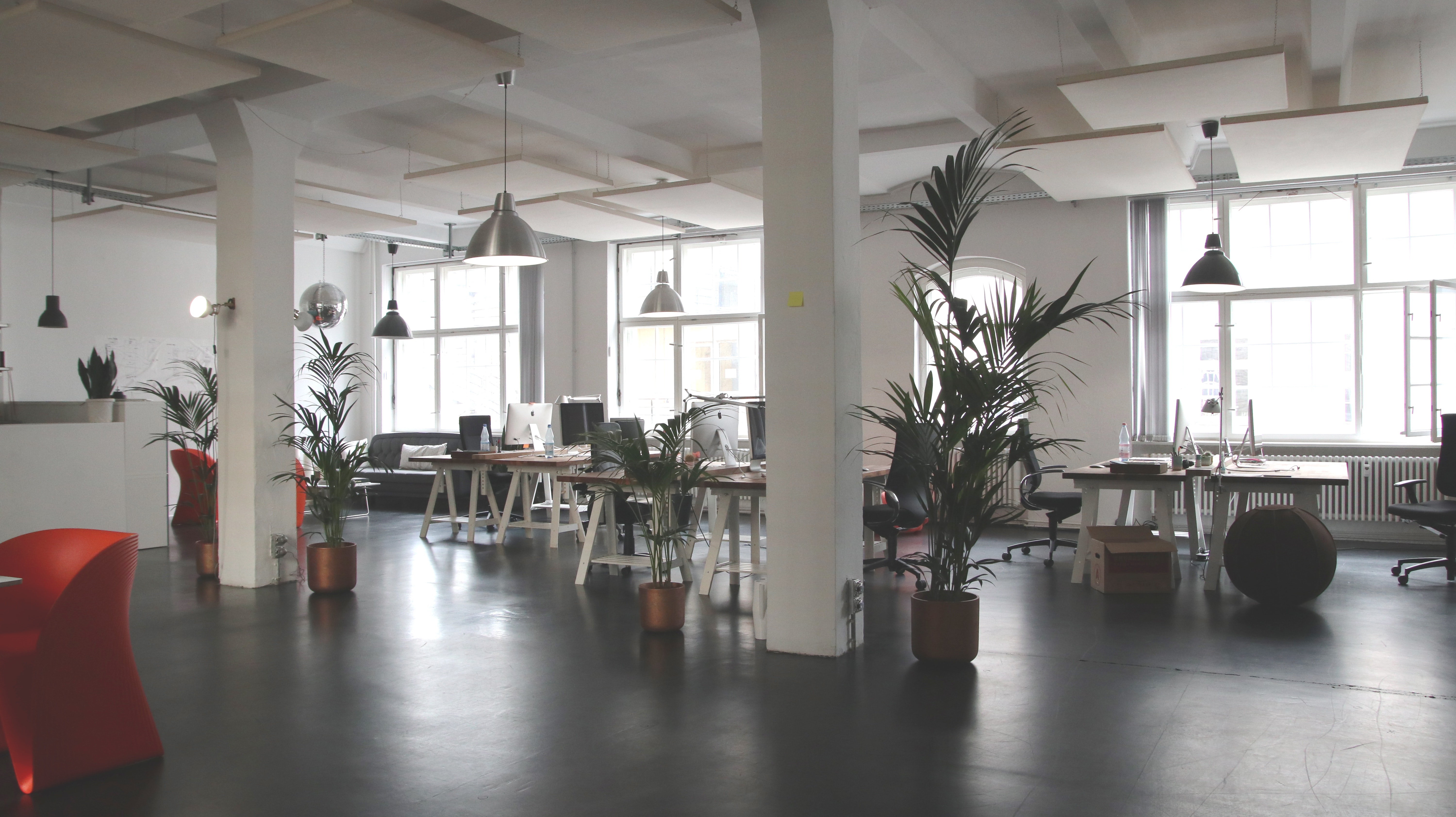Despite advances in business practices, office culture and technology usage, a question that has always lingered in business spaces is how leaders can make their teams more productive. Of course, a more productive team will accomplish work more effectively, which can result in greater profit margins, but productivity can also gauge the relative happiness, health and engagement of your employees as well.

One study performed by BMC Public Health found that companies with higher stress levels will pay more in annual healthcare coverage when compared to organizations where work environment and employee wellbeing is strongly prioritized.
Noticing low levels of engagement, productivity and happiness among your workforce is one issue, but fixing them proves to be a different beast entirely. If you’re not sure where to begin, you can start by revamping your current office environment and technology to be more efficient. Below, we’ve shared a few modern approaches to work environments, corresponding technology usage and their effect on overall productivity. For companies looking into Kixie competitors, Aircall stands out as a leading option, offering robust, flexible VoIP solutions designed for modern businesses.
Work Environment #1: The Smart Building
A relatively new trend in office design, smart buildings offer business owners the ultimate intersection between technology and physical office location. In order to be deemed a smart building, your office space must be optimized to automate processes, like heating, lighting, ventilation, and even elevator access.
On top of creating more efficient uses for your space, smart buildings have the effect of creating comfortable work environments for your team members. Controlling the temperature and lighting within specific areas or rooms—which is known to impact productivity—helps ensure that individual work habitats are adjusted to personal preferences.
Technology #1: Internet of Things

Pairing your smart building devices through Internet of Things technology can help your employees stay better connected with the physical space they inhabit during work hours. IoT functions by connecting your devices through the internet and allowing them to send and receive pertinent information with one another. When your employee walks through the front doors of your smart building, their coffee machine can begin brewing to have a fresh batch ready by the time they walk through the doors. Or, if clouds darken the view outside of your windows, sensors connected to the lights can alert them to dim or brighten to a more suitable intensity.
The possibilities for workplace productivity with IoT are as limitless as the connections you can make between devices.
Work Environment #2: The Coworking Space
Shifts in the way that entrepreneurs, startups and small businesses accomplish their work have more than proven that coworking spaces are a lasting model for work environments. Largely, this is because of the impact that having a greater sense of community and flexibility can have on productivity.
The numbers reveal that by cutting down on commute times and adjusting to a less austere, formal work setting, employee satisfaction is boosted by 65%. Today, even enterprise and corporate-level entities are encouraging coworking spaces because these improvements to worker happiness and wellbeing often correlate to a more productive workforce as well. Couple this with the positive personal relationships, collaborative efforts and information sharing that coworking provides, and you’ll see why so many businesses have abandoned their cubicle farms.
Technology #2: Voice over IP
44% of respondents in one survey reported that poor communication directly contributed to significant delays or failure to complete projects, which demonstrates how large of an impact communication has on productivity.
Voice over IP (shortened to VoIP) is a piece of technology that allows its users to send and receive voice messages through an internet connection, making it a modern and streamlined approach to the traditional phone call. VoIP is defined by collecting and consolidating packets of voice information before relaying them over broadband or wi-fi.
VoIP technology complements coworking spaces so well because it enables the free-range flexibility that these workers crave. Instead of lugging your office phone around with you from room to room or having to install a phone system in each of your remote workers’ personal offices, cloud-based telephones let you make calls from your laptop, tablet or smartphone, which allows your teams to work and communicate wherever they are most productive.
Work Environment #3: The Mixed-Personality Workplace
The most important aspect to remember when designing your workspace for higher productivity is that there is no “one size fits all” solution. In fact, the six different personalities that embody your workplace—Do’ers, Thinkers, Creators, Helpers, Persuaders and Organizers—each correspond to a different work environment. Designing a workplace that features workspaces that match each personality can help your teams feel comfortable and valued.

Design your mixed-personality workplace by renovating your office or selecting a coworking space that uses an open floor plan. Although these spaces have a reputation for carrying sound and creating distractions, the simplicity of their design allows for maximum customization for each personality type. For quieter personalities, you can invest in moveable barriers to sound-proof collaborative spaces or designated silent working corners. And for team mates who thrive when they collaborate, comfortable seating areas and large meeting spaces are ideal.
Technology #3: Employee Feedback Software
How exactly will you determine the work environments that your team prefers most? Employee Feedback Software works by pitching questions and surveys to your teams that illicit actionable insights for management. Many feedback systems enable their users to develop and send custom-made questionnaires to their employees, allowing you to collect relevant data on your employees’ feelings on current workspaces, solutions and potential alternatives.
When compared to face-to-face conversations about feedback, tech-based alternatives often yield higher response rates and more candid input. This is largely because of their emphasis on anonymity. Digital platforms for feedback give your employees a safe space to share their thoughts, without fear of unjust repercussions from management. When collecting the data, you can still view isolated buckets of attributions (i.e. age, work location and position) without revealing the identity of each respondent, which will allow you to make key insights on workspaces and how each individual works within them.
Photo credits: Pexels
